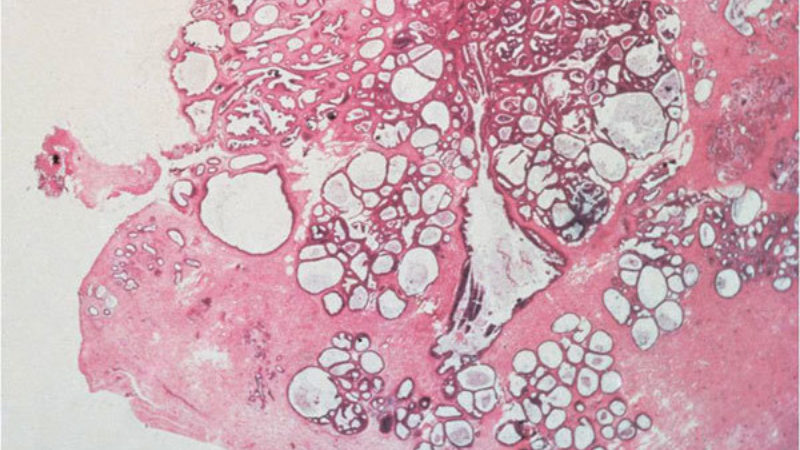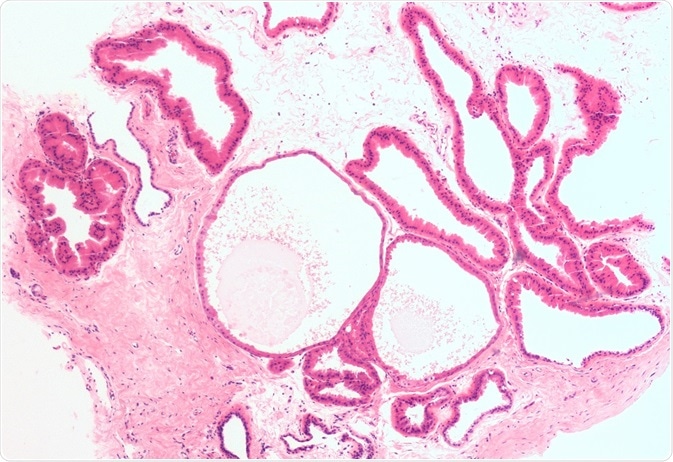

Pain that commonly comes and goes with your period, but may last through the whole month.Symptoms of fibrocystic changes can include: Having one or more cysts does not affect the risk of later developing breast cancer. Fluid may sometimes accumulate again, and more aspirations may be necessary.

Removing the fluid can reduce the pressure and pain. An ultrasound can confirm the presence of the cyst, and the cyst can often be drained using a technique called fine needle aspiration.

A round lump that can be moved and is tender to the touch is often a cyst. These cysts often become larger and more painful just before a woman’s period, as a result of monthly hormonal changes.įrequently a lump found in a woman’s breast is simply a result of fibrocystic changes, and the cysts that have developed. As cysts grow, they can cause pressure and stretching of the surrounding breast tissue, which can be uncomfortable. These cysts can be detected during a self-exam and can grow to several inches in diameter. If fluid continues to build up, larger cysts, or macrocysts, can develop. Fluid builds up inside the glands of the breast, initially forming small cysts, or microcysts, that are detectable only when breast tissue is examined under a microscope. The cysts that characterize fibrocystic breast changes are spaces filled with fluid lined by breast glandular cells. Fibrosis often changes the way that a breast feels to the touch, for example making areas of the breast feel hard or "rubbery." Fibrosis does not increase the risk of developing breast cancer and usually does not require any special treatment. Fibrosis is a fibrous tissue similar to ligaments and to scar tissues. The term "fibrocystic" refers to the fact that both fibrosis and cysts are often present in the breast. Major Spencer, can you tell us more about fibrocystic changes?ĭefinitely, Dr. This condition affects up to 50% of all women at some point, most often during their childbearing years. These changes in the breast tissue usually involve both the glandular and supporting, or stromal, tissues.
#Fibrocystic breast changes professional#
This information is not a substitute for professional medical advice.One fairly common benign breast condition is known as fibrocystic changes. Edits to original content made by Rector and Visitors of the University of Virginia. If the lump is small and close to the surface, we can do this in the clinic with local anesthesia.Ĭontent was created using EBSCO’s Health Library. The only difference is that a tiny piece of tissue is also drawn out of the lump.Īn excisional biopsy removes the entire lump through a surgical incision. BiopsyĪ fine-needle biopsy is nearly identical to an aspiration. If the lump remains, or if the fluid withdrawn is bloody, we'll need to do further tests. If the lump disappears, it is probably not cancer. AspirationĪfter numbing the area with a local anesthetic, your doctor inserts a small needle into the lump. Sometimes we'll need to do tests to make sure. Diagnosing Fibrocystic Diseaseĭoctors may have difficulty telling the difference between this condition and breast cancer. That's why most fibrocystic pain happens at the end of your period. This cycling causes cysts and excess fibrous tissue to build up. This cycle happens because the tissue grows to prepare for a pregnancy. That's the first clue that these lumps aren't cancer. These lumps will appear and disappear, along with your period. What Causes Breast Cysts?įibrocystic disease builds up scar-like tissue around fluid-filled cystic lumps of duct tissue.


 0 kommentar(er)
0 kommentar(er)
